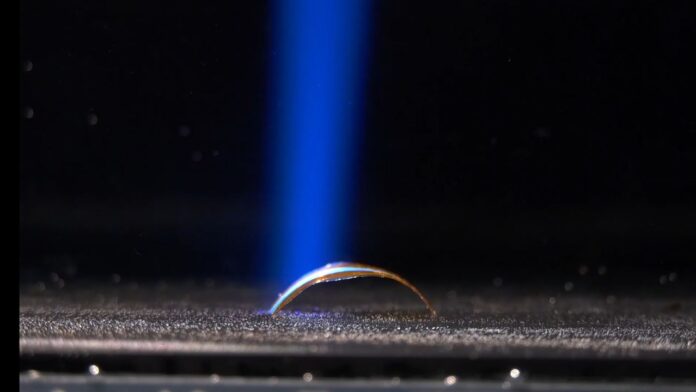Material that, after printing, can move, bend, grow or shrink when exposed to light, heat or water. It is possible with the help of a new ‘ink’ developed at TU/e. This 4D technique could soon help the medical and security sector with revolutionary applications.
Movable prints could be the missing link in the world of complicated artificial organs, such as artificial eyes and artificial hearts: complex pieces of technology, which must be able to respond to light stimuli (eye) or liquid (heart). This is still only partly possible, but with the help of new technology from Eindhoven, it may be possible on a larger scale in the future. Although the ifs and buts are still numerous. The material for the prints is still very expensive and before the first printed artificial eye is implanted, thousands of tests will probably be necessary.
Yet the Spanish TU/e PhD student Marc del Pozo Puig is a proud man. He spent hundreds of hours in the lab until he finally had the material that showed the desired response when heated, lit and in contact with water. “Prints that react to water already existed”, Marc says, “but we can also deform this ‘ink’ with light and heat. That was not possible before and it offers many possibilities”.
Del Pozo Puig mentions the security industry. “You could add an extra truth feature: an image that changes colour as soon as you blow on it. By the ink changing colour when it comes into contact with condensation”. The PhD student also mentions multitasking robots that will be able to work even more precisely with the new 4D prints. “And prosthetics and other replacement organs of course. You could soon make an eye that reacts to the amount of light entering it; a property that a real eye also has, but soon something that can be reproduced thanks to this new technology”.
Del Pozo acknowledges that it could be years before that happens. And no, Philips Medical has not yet shown any interest in his discovery. “But we are on our way. It is no longer science fiction”.
Source: Studio040
Translated by: Bob
















